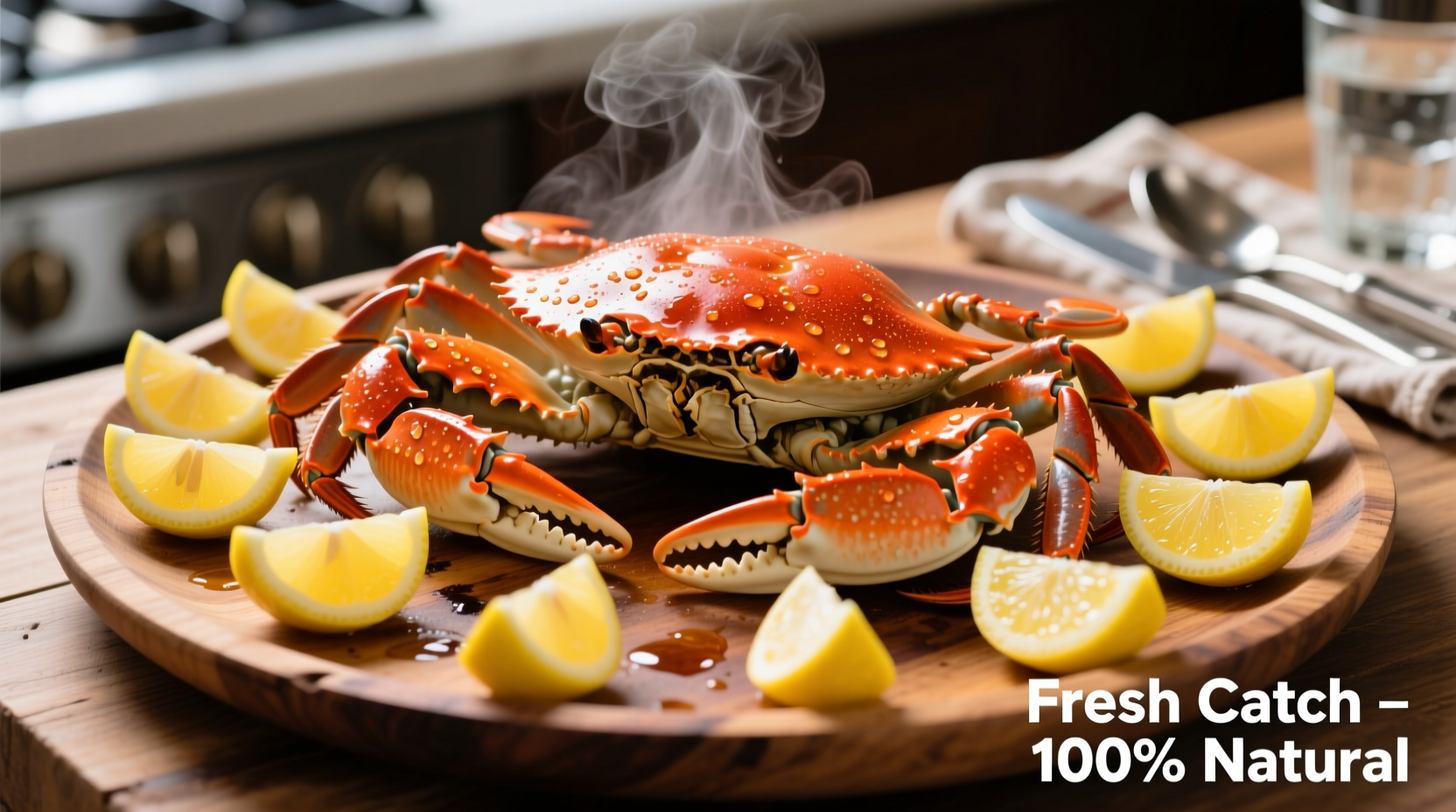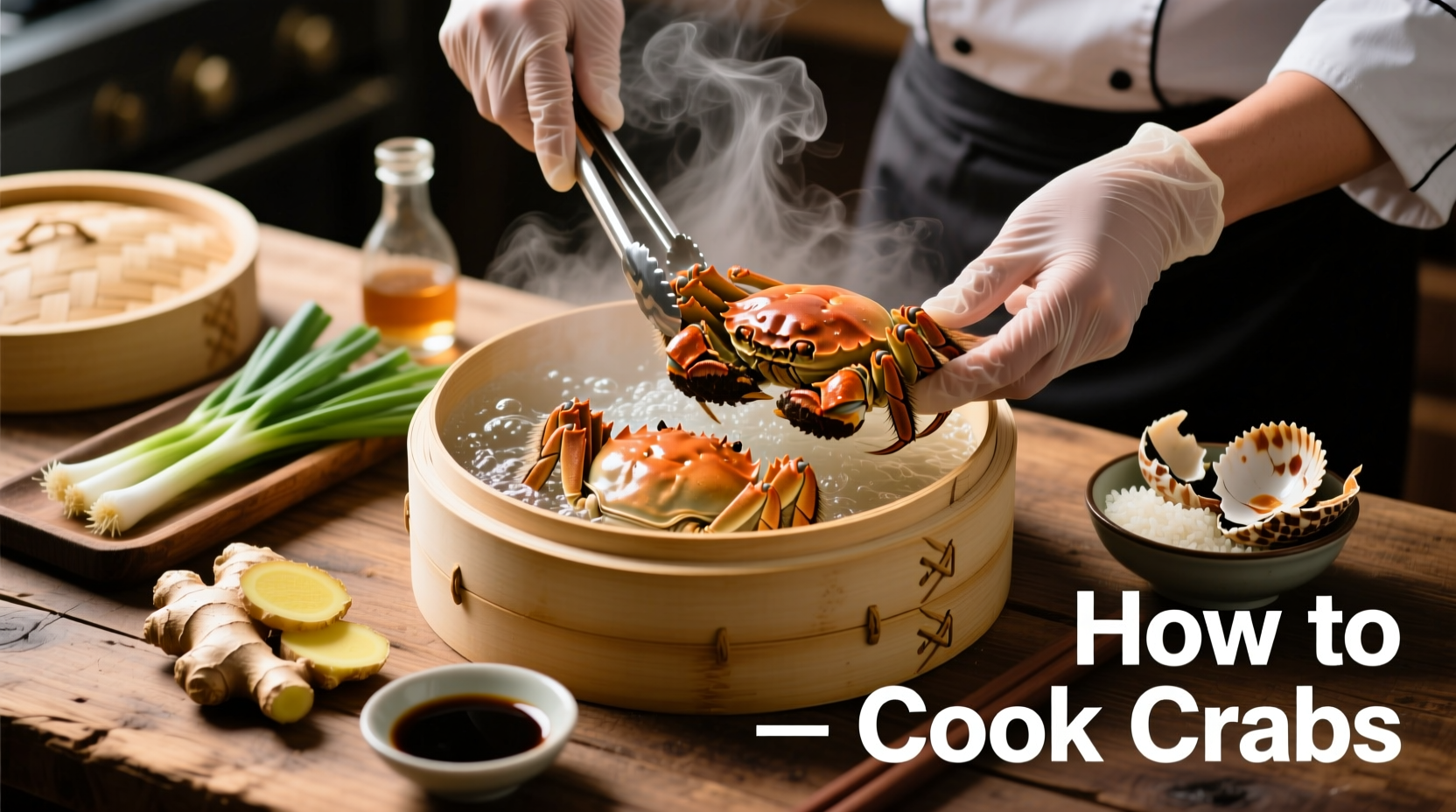The best way to cook crabs is by boiling or steaming live crabs for 15-20 minutes depending on size. For boiling, use 1/4 cup salt per gallon of water and cook until shells turn bright red. Steaming preserves more flavor but requires a large pot with a steamer basket. Always handle live crabs carefully and never cook dead crabs for food safety reasons.
Understanding Your Crabs: What You Need to Know Before Cooking
Before you start cooking crabs, it's essential to understand what type you have and how to handle them properly. The three most common varieties available to home cooks are Dungeness, Blue, and Snow crabs, each with different cooking requirements.
According to the FDA Food Code, live crabs must be kept refrigerated at 41°F (5°C) or below until ready to cook. Never cook crabs that have died before preparation, as they can develop harmful bacteria rapidly. Fresh, live crabs should be active with all legs intact and emit a clean, ocean-like smell.
| Crab Type | Average Weight | Cooking Time | Best Cooking Method |
|---|---|---|---|
| Dungeness | 1.5-2.5 lbs | 15-18 minutes | Steaming |
| Blue Crab | 0.5-1.5 lbs | 8-12 minutes | Boiling |
| Snow Crab Legs | 1-2 lbs | 4-6 minutes | Steaming |
Essential Tools for Cooking Crabs
Having the right equipment makes crab cooking safer and more efficient. You'll need:
- Large stock pot (at least 8 quarts) with tight-fitting lid
- Steamer basket (for steaming method)
- Crab cracker or nutcracker
- Crab mallet or small hammer
- Thick kitchen gloves for handling live crabs
- Long tongs for safe handling
- Plastic or newspaper-covered surface for serving
Step-by-Step: How to Prepare Live Crabs Safely
Safety comes first when handling live crabs. The USDA Food Safety and Inspection Service recommends these preparation steps:
- Chill crabs in the refrigerator for 15-20 minutes before handling to reduce activity
- Wear thick gloves to protect your hands from pinches
- Hold the crab firmly behind the claws with one hand
- Carefully remove any rubber bands from claws (keep them nearby to reapply if needed)
- Rinse thoroughly under cold running water to remove debris
- Inspect for damage or signs of death (strong ammonia smell, lack of movement)
Never place live crabs directly into boiling water as this causes unnecessary suffering. Instead, chill them first or use the more humane method of quickly piercing the small hole behind the eyes with a sharp knife.
Boiling Crabs: The Classic Method
Boiling is the most straightforward method for cooking crabs, especially for beginners learning how to cook crabs properly. Follow these steps for perfect results:
- Fill a large pot 2/3 full with water
- Add 1/4 cup salt per gallon of water (this seasons the meat)
- Bring to a rolling boil
- Add optional flavorings: 1 bottle of beer, 1/4 cup vinegar, or crab boil seasoning
- Carefully add crabs headfirst using tongs
- Cover immediately and return to boil
- Cook for 15-20 minutes (time varies by size and type)
- Crabs are done when shells turn bright red and meat is opaque
According to culinary experts at the Culinary Institute of America, the key to perfectly boiled crabs is not overcooking them. Overcooked crab meat becomes rubbery and difficult to extract from the shell. Set a timer as soon as the water returns to a boil after adding crabs.

Steaming Crabs: Preserving Maximum Flavor
Steaming is preferred by many chefs because it preserves more of the crab's natural sweetness. Here's how to steam crabs properly:
- Add 2 inches of water to a large pot with steamer basket
- Bring to a boil
- Place crabs in steamer basket, cover with lid
- Steam for 15-20 minutes depending on size
- Add flavorings like beer, vinegar, or Old Bay seasoning to the water
The steaming method works particularly well for Dungeness crabs, which are prized for their sweet flavor. Unlike boiling, steaming doesn't dilute the natural juices with water, resulting in more concentrated flavor. For best results, don't overcrowd the pot—steam in batches if necessary.
Grilling Crabs: Adding Smoky Complexity
For a unique twist on how to cook crabs, try grilling. This method adds wonderful smoky notes that complement the sweet crab meat:
- Prepare crabs as described in the preparation section
- Cut crabs in half lengthwise with a sharp knife
- Remove gills and mandibles (the spongy parts)
- Brush cut sides with melted butter and seasonings
- Place cut-side down on preheated grill (medium-high heat)
- Cook for 5-7 minutes per side until shells turn red
Grilling works best with larger crab varieties like Dungeness. The high heat creates beautiful grill marks while keeping the delicate meat tender. This method requires careful attention to prevent overcooking.
When to Use Each Cooking Method
Understanding which cooking method to use depends on several factors:
- Boiling is best when: You're cooking multiple crabs at once, want to infuse strong flavors throughout, or are serving a large group
- Steaming is ideal when: You want to preserve the crab's natural sweetness, cooking premium varieties like Dungeness, or prefer a cleaner presentation
- Grilling works well when: You want smoky flavor notes, are cooking for a special occasion, or have access to fresh crabs you want to showcase
Consider your equipment limitations and serving context when choosing your method. Boiling requires the least specialized equipment, while grilling needs proper outdoor cooking facilities.
Serving Your Perfectly Cooked Crabs
How you serve your crabs completes the experience. Follow these professional tips:
- Serve immediately while hot for best texture and flavor
- Use newspaper or brown paper bags as traditional serving surfaces
- Provide crab crackers, mallets, and small forks for extracting meat
- Offer melted butter, lemon wedges, and vinegar-based dipping sauces
- Include side dishes like corn on the cob, potatoes, or coleslaw
- Have plenty of wet wipes or finger bowls available
For an authentic experience, serve crabs whole rather than pre-cracked. This allows guests to enjoy the full ritual of extracting the sweet meat, which is part of the enjoyment for many crab enthusiasts.
Troubleshooting Common Crab Cooking Problems
Even experienced cooks encounter issues when learning how to cook crabs. Here's how to solve common problems:
- Rubbery meat: Usually caused by overcooking. Reduce cooking time by 2-3 minutes next time.
- Difficult to extract meat: Crabs may have been frozen and thawed improperly. Use a small fork to help loosen meat.
- Bland flavor: Increase seasoning in cooking liquid or serve with more flavorful dipping sauces.
- Shell discoloration: Could indicate the crab was dead before cooking. Always use live crabs for best results.
- Watery texture: Common with boiled crabs. Try steaming next time to preserve natural juices.
Remember that crab cooking times vary based on size, freshness, and cooking method. The best indicator of doneness is when the shell turns bright red and the meat becomes opaque white.
Storing Leftover Cooked Crabs
If you have leftovers (which is rare with good crab!), proper storage is essential for food safety. According to the FDA Safe Food Handling guidelines, cooked crabs should be refrigerated within two hours of cooking.
Store whole cooked crabs in an airtight container for up to 2 days. For longer storage, remove all meat from shells and store in freezer-safe containers for up to 3 months. Never refreeze crab meat that has been previously frozen.
FAQs About Cooking Crabs
How long should I cook crabs?
Cook crabs for 15-20 minutes depending on size. Blue crabs take 8-12 minutes, Dungeness need 15-18 minutes, and snow crab legs require only 4-6 minutes. The shell should turn bright red and the meat opaque when fully cooked.
Should I cook crabs alive or can I use dead crabs?
Always cook crabs while they're alive for food safety reasons. Dead crabs can develop harmful bacteria quickly. If a crab dies before cooking, discard it immediately. Never cook or eat crabs that weren't alive when you started cooking.
What's the difference between boiling and steaming crabs?
Boiling submerges crabs in seasoned water, infusing more flavor throughout but potentially diluting natural sweetness. Steaming keeps crabs above the water, preserving more of their natural flavor and resulting in slightly firmer meat texture. Steaming is generally preferred for premium crab varieties.
How do I know when crabs are fully cooked?
Crabs are done when the shell turns bright red or orange (depending on variety), the meat becomes opaque white, and the legs pull away easily from the body. For most crabs, this takes 15-20 minutes of boiling or steaming. Undercooked crab meat will be translucent, while overcooked meat becomes rubbery.
Can I cook frozen crabs?
Yes, but never cook whole frozen crabs. Thaw frozen crabs completely in the refrigerator overnight before cooking. For frozen crab legs, steam for 5-7 minutes until heated through. Cooking frozen whole crabs results in uneven cooking and potentially unsafe food temperatures in the center.











 浙公网安备
33010002000092号
浙公网安备
33010002000092号 浙B2-20120091-4
浙B2-20120091-4